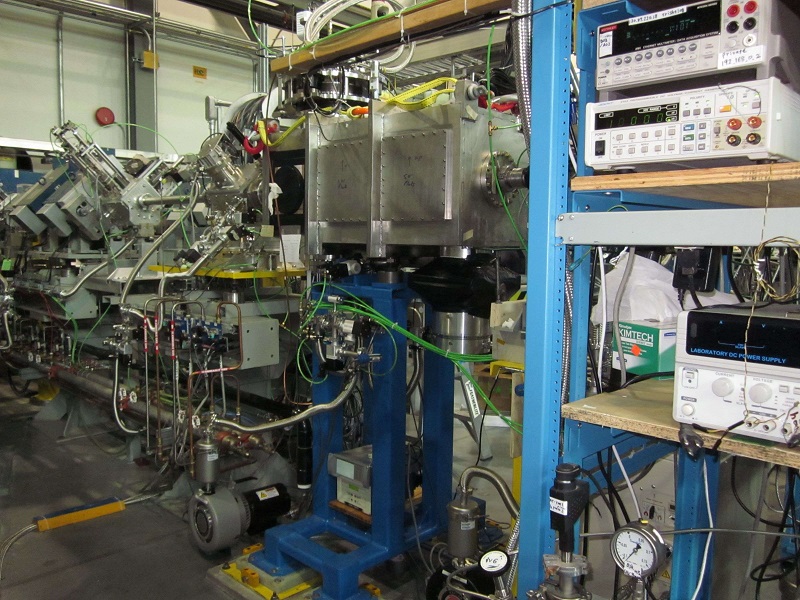
Saint Mary’s University graduate student Amit Kumar, who worked at the IRIS facility at TRIUMF, and TRIUMF postdoctoral fellow Angelo Calci (left), Dr. Rituparna Kanungo,center, and Dr. Petr Navratil, right, were key players in the experimental analysis and theoretical calculations, respectively.
A research paper published June 28th. 2017 in Physical Review Letters is offering new insight into unraveling the mysteries of the strong nuclear force. Led by Saint Mary’s University, and in close collaboration with the TRIUMF theory group, the paper details a highly sensitive experiment at the ISAC Charged Particles Spectroscopy Station (IRIS) at TRIUMF that has shed light on previously unknown characteristics of the strong nuclear force.

ISAC Charged Particles Spectroscopy Station (IRIS) at TRIUMF
The project was a synthesis of state-of-the-art radioactive ion beam experiment and ab initio theory led by Dr. Rituparna Kanungo
of the Saint Mary’s University Department of Astronomy and Physics and Dr. Petr Navratil, TRIUMF Theory Department, together with researchers from TRIUMF-ISAC Experiment Group, Lawrence Livermore National Laboratory, Technical University of Darmstadt, University of Guelph, McMaster University, KEK, RCNP, Nuclear Physics Institute in Orsay and University of Edinburgh.

Amit Kumar and Alisher Sanetullaev setting up the experiment. No image credit.
The team analyzed the diffraction pattern of scattering of the exotic isotope 10C following impact with an innovative, custom-made solid hydrogen target at IRIS. 10C is an invaluable tool to expose the finer details of the strong nuclear force because it sits at the proton drip-line- the edge of proton-rich bound nuclear isotopes. The paper demonstrated that, unlike highly stable carbon-12 (12C) and other naturally occurring elements, isotopes near the drip-line (like 10C) can amplify the less known features of the nuclear force in the scattering cross section. By comparing the new experimental results to theoretical predictions, the team was able to uncover a new and extremely sensitive probe of the nuclear force.

Measured differential cross section compared to calculations with different modern nuclear force models. See the Physical Review Letters article for details.
The team would like to gratefully acknowledge research support from NSERC, the Canada Foundation for Innovation and Nova Scotia Research and Innovation Trust. TRIUMF receives funding via a contribution through the National Research Council of Canada.
See the full article here .
Please help promote STEM in your local schools.
Stem Education Coalition

Triumf Campus
World Class Science at Triumf Lab, British Columbia, Canada
Canada’s national laboratory for particle and nuclear physics
Member Universities:
University of Alberta, University of British Columbia, Carleton University, University of Guelph, University of Manitoba, Université de Montréal, Simon Fraser University,
Queen’s University, University of Toronto, University of Victoria, York University. Not too shabby, eh?
Associate Members:
University of Calgary, McMaster University, University of Northern British Columbia, University of Regina, Saint Mary’s University, University of Winnipeg, How bad is that !!
